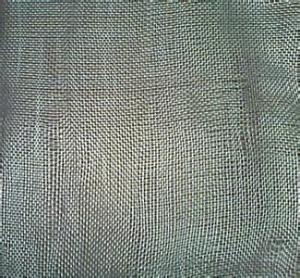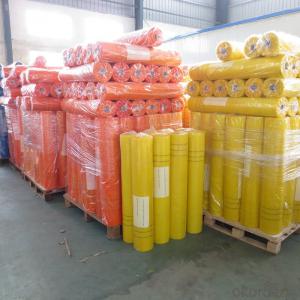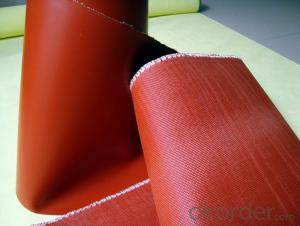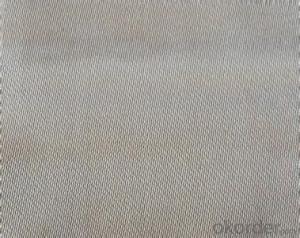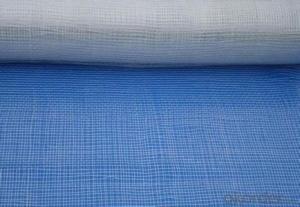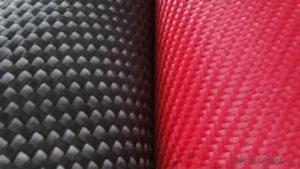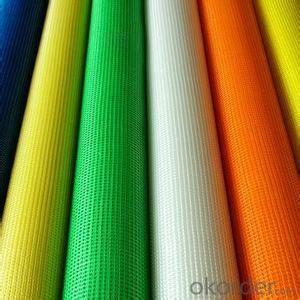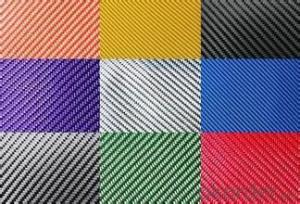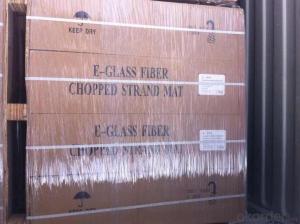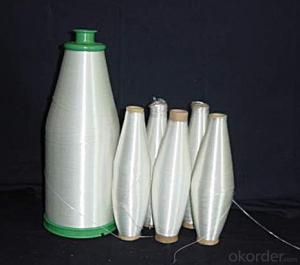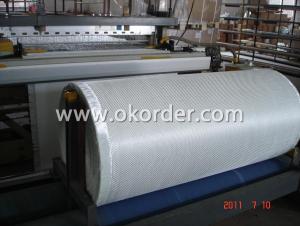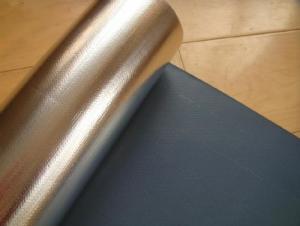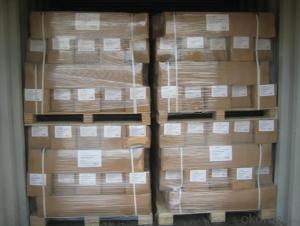Silicone Fiberglass Fabric - High Silica Cloth
- Loading Port:
- China Main Port
- Payment Terms:
- TT OR LC
- Min Order Qty:
- -
- Supply Capability:
- -
OKorder Service Pledge
OKorder Financial Service
You Might Also Like
Fiberglass silica cloth
all models are available
1. fireproof, the fire-protection rate can be achieved between B1 to A2.
2. insulation, thermal insulation, glass fiber characteristics. It has high insulation and heat-perseveration functions, which can make the indoor temperature keep constant, can greatly reduce energy loss.
3.High tensile strength.
4. waterproof, water and steam impermeable.
5. aging- resistant, the life time is very long.
6. high temperature proof. do not become deformed under the temp of 500 c.
Color can be silver, red, black and so on. According to customers' request!
Silicone is a good coating, which can make the fiberglass cloth more soft, higher tensile strengh, better fireproof.
Silica cloth is high temperature fabric used for a wide range of insulation and protection applications in industry, excellent heat resistance.
Silica cloth is a special fiberglass cloth which contains more than 96% silicon dioxide, loss on Ignition less than 10%, it can withstand continuous temperatures of 1000 D.C. for long periods of time, and instantaneous temperatures of up to 1600 D.C. The product has been used extensively in the replacement of asbestos.
Silica fabric is primarily used in hot work such as welding and burning operations. It is useful for high temperature thermal and electrical insulation in severe application environments.
- Q: What is the typical lifespan of fiberglass fabrics?
- The typical lifespan of fiberglass fabrics can vary depending on several factors such as the quality of the fabric, the environment it is used in, and the level of maintenance and care provided. Generally, fiberglass fabrics are known for their durability and longevity, and they can last anywhere from 10 to 30 years or even longer with proper care. Fiberglass fabrics are commonly used in applications such as insulation, construction, and the manufacturing of boats, automobiles, and aircraft. In these industries, the fabrics are often exposed to harsh conditions, extreme temperatures, and chemical exposure. Despite these challenges, fiberglass fabrics can maintain their structural integrity and performance for a significant amount of time. However, it is important to note that certain factors can affect the lifespan of fiberglass fabrics. Over time, exposure to UV radiation can cause the fabric to degrade and lose its strength. Additionally, improper handling, excessive abrasion, and lack of maintenance can also shorten the lifespan of fiberglass fabrics. To maximize the lifespan of fiberglass fabrics, regular inspections, cleaning, and maintenance are recommended. This includes keeping the fabric clean, avoiding excessive abrasion or impact, and promptly repairing any damages or tears. Additionally, applying protective coatings or treatments can provide an extra layer of protection against UV radiation and chemical exposure. In conclusion, the typical lifespan of fiberglass fabrics can range from 10 to 30 years or longer, depending on various factors. With proper care and maintenance, fiberglass fabrics can offer durability and performance for a significant amount of time, making them a reliable choice for various industrial and commercial applications.
- Q: Can fiberglass fabric be used for insulation in chimneys and flues?
- Using fiberglass fabric for insulation in chimneys and flues is not recommended. This material is not suitable for high-temperature situations like chimneys and flues, as it can melt or catch fire when exposed to extreme heat. Furthermore, fiberglass fabric may not offer sufficient insulation to prevent heat transfer, which is crucial in chimney and flue systems to maintain proper airflow and minimize fire hazards. To ensure safety and optimal performance in chimneys and flues, it is important to select insulation materials specifically designed for high-temperature environments, such as refractory insulation or ceramic fiber insulation.
- Q: What are the different surface textures available in fiberglass fabric?
- Fiberglass fabric is known for its versatility and wide range of surface textures, each offering unique properties and benefits. Some of the different surface textures available in fiberglass fabric include: 1. Plain Weave: This is the most basic and commonly used texture, featuring a simple over-and-under pattern of fibers. It offers good strength and stability while providing a smooth surface finish. 2. Twill Weave: Twill weave consists of a diagonal pattern created by interlacing fibers. It offers improved drapability, better conformability, and increased strength compared to plain weave. Twill weave also provides a distinctive appearance. 3. Satin Weave: Satin weave involves floating yarns over multiple warp or weft yarns, resulting in a smooth and lustrous surface. It offers excellent flexibility, durability, and a high-quality finish. Satin weave is commonly used in applications requiring a high level of aesthetics. 4. Leno Weave: Leno weave is characterized by a pair of warp yarns twisting around weft yarns, creating an open mesh structure. This texture enhances breathability, allows easy resin saturation, and provides good drapability. Leno weave is often utilized in applications where air circulation or filtration is crucial. 5. Jacquard Weave: Jacquard weave involves complex patterns created by individual control of each warp yarn. It allows intricate designs and textures to be woven into the fabric. Jacquard weave is commonly used for decorative purposes or when specific patterns are required. Each surface texture in fiberglass fabric is designed to cater to specific applications, such as aerospace, automotive, marine, construction, and industrial sectors. The choice of texture depends on factors such as the desired strength, flexibility, aesthetics, and functionality required for the particular application.
- Q: Does fiberglass fabric provide UV protection?
- Yes, fiberglass fabric does provide UV protection. Fiberglass itself has inherent UV-resistant properties, making it an excellent choice for applications that require protection from harmful ultraviolet rays. The fabric made from fiberglass fibers can effectively block a significant amount of UV radiation, offering a high level of protection against the sun's harmful rays. This makes it a popular choice for outdoor products such as awnings, sunshades, and outdoor furniture covers, where UV protection is essential. Additionally, fiberglass fabric is also known for its durability and resistance to fading, further enhancing its ability to provide long-lasting UV protection.
- Q: Glass fiber cloth and glass fiber?
- As reinforcing materials, glass fibers have the following characteristics, which make fiberglass far more widely used than other kinds of fibers and develop far ahead of their characteristics:(1) high tensile strength and small elongation (3%).(2) high elasticity and good rigidity.(3) the elongation within the elastic limit is large and the tensile strength is high, so the impact energy is large.(4) for inorganic fiber, with non flammable, chemical resistance.(5) water absorption is small.(6) the scale stability and heat resistance are excellent.(7) good processability, can be used as stock, bundle, felt, weaving and other forms of products.(8) transparent and permeable to light(9) the development of surface treatment agents with good resin properties.(10) the price is cheap.
- Q: Characteristics and advantages of polyester glass fiber cloth
- It can be completely crushed and used for road regenerationPolyester fiber glass fabric has its own material properties, so it can be crushed and recycled. When milling, the polyester fiberglass fabric is crushed into very small fibers. This can actually increase the performance of the recycled material. Other fabric cracks can sometimes be glued to the milling machine, resulting in costly shutdowns.
- Q: Is fiberglass fabric resistant to chemicals in automotive fluids?
- Yes, fiberglass fabric is generally resistant to chemicals found in automotive fluids. Fiberglass itself is a highly durable and versatile material that is known for its resistance to a wide range of chemicals, including those typically found in automotive fluids such as gasoline, diesel, oil, and antifreeze. It is commonly used in automotive applications where resistance to chemicals is required, such as in the production of gaskets, seals, and insulation materials. However, it is important to note that the specific chemical resistance of fiberglass fabric can vary depending on the type of resin used in its production and the specific composition of the automotive fluid. Therefore, it is always recommended to consult the manufacturer's specifications or conduct compatibility tests to ensure the optimal performance of fiberglass fabric in contact with automotive fluids.
- Q: Are fiberglass fabrics resistant to rot or decay?
- Certainly, fiberglass fabrics possess an inherent resistance to rot or decay. The reason behind this lies in the composition of fiberglass itself, comprising fine glass fibers combined with a polymer resin. This unique blend grants fiberglass a remarkable resilience against moisture, chemicals, and external elements that typically lead to rot or decay in alternative materials. Moreover, the impermeable nature of fiberglass hinders the growth of mold, mildew, or bacteria, ultimately preventing any potential deterioration. Consequently, fiberglass fabrics emerge as an ideal choice for a variety of applications that require resistance to rot or decay, including outdoor furniture, boat hulls, and building materials, due to their exceptional durability and long-lasting properties.
- Q: Can fiberglass fabric be used for insulation tapes?
- Yes, fiberglass fabric can be used for insulation tapes. Fiberglass fabric is known for its excellent thermal insulation properties, making it an ideal material for insulation tapes. It can effectively prevent heat transfer and provide insulation for various applications, such as electrical, HVAC, and industrial insulation. In addition, fiberglass fabric is also resistant to fire, chemicals, and moisture, making it a durable and reliable option for insulation tapes.
- Q: Is fiberglass fabric flame resistant?
- Yes, fiberglass fabric is flame resistant. It is made from glass fibers that have been woven into a fabric. The glass fibers have a high melting point, which makes the fabric highly resistant to catching fire or melting. This makes fiberglass fabric a popular choice in applications where flame resistance is important, such as in insulation, protective clothing, and fireproof curtains. However, it is important to note that while fiberglass fabric is flame resistant, it is not completely fireproof. It may still burn if exposed to high temperatures for prolonged periods of time.
Send your message to us
Silicone Fiberglass Fabric - High Silica Cloth
- Loading Port:
- China Main Port
- Payment Terms:
- TT OR LC
- Min Order Qty:
- -
- Supply Capability:
- -
OKorder Service Pledge
OKorder Financial Service
Similar products
Hot products
Hot Searches
Related keywords
